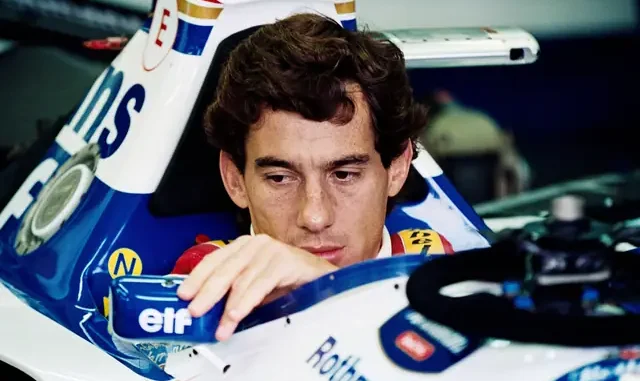
Netflix’s new limited series “Senna” dramatizes the life of late Formula 1 driver Ayrton Senna, chronicling his achievements as a three-time world champion and his fatal crash in 1994.
The six-episode scripted series, starring Gabriel Leone as the titular character, shows the Brazilian driver’s humble beginnings in karting, his move to Europe to compete in Formula Ford, and the highs and lows of his 10 years in Formula 1.
But Senna’s death, the result of a crash at the San Marino Grand Prix on May 1, 1994, looms over the series. The final episode of “Senna” recounts that ill-fated weekend in Imola, Italy.
Here’s what happened leading up to Senna’s crash and how his death at 34 years old changed the course of F1.
Senna made his F1 debut with Toleman in 1984 and moved to Lotus the following year. After his switch to McLaren in 1988, Senna saw the most success in his career, winning the world championship in 1988, 1990, and 1991.
For the 1994 season, Senna jumped to Williams, a team that performed well the prior year. He hoped to score wins with the team, but the F1 cars underwent massive changes after electronic aids were banned. These electronic features were an advantage that helped the drivers on the circuits. Without them, there was no traction control, special brakes, or electronic suspension.
In archival interview footage featured in the 2010 documentary “Senna: No Fear, No Limits, No Equal,” Senna said that the car felt “immediately less stable without the electronic suspension” and harder to drive, leading to spinning out and going off-track
By the time of the San Marino GP, the third race of the 1994 season, the handling of the car was still poor and Senna was uncomfortable driving it.
In footage taken during the practice session on Friday, April 29, 1994, Senna was seen telling the Williams team about issues with the car’s balance.
On the weekend of the San Marino GP, 2 drivers died in 2 days: Roland Ratzenberger and Senna
On Friday, Jordan driver Rubens Barrichello crashed and suffered non-fatal injuries. Then, during the qualifying session on Saturday, Simtek driver Roland Ratzenberger experienced an even more severe crash and died from injuries that took place on the circuit.
Ratzenberger’s death shook up Senna. Still, he decided to participate in the race on Sunday.
“Ayrton got very, very upset and cried a bit,” F1 doctor Sid Watkins said in the 2010 documentary. “And that’s when I said to him, ‘You know, Ayrton, you’ve been three times world champion. You’re the fastest man in the world.’ And he liked fishing, so I said, ‘Why don’t you quit? And I’ll quit and we’ll just go fishing?'”
In Watkins’ book “Life at the Limit,” the doctor said that Senna’s final words to him during that conversation were: “Sid, there are certain things over which we have no control. I cannot quit, I have to go on.”
While on lap seven of 58, Senna’s FW16 crashed at the Tamburello corner. The reason for the incident remains unknown, but Senna’s car crashed at an angle where the suspension shaft hit his helmet.
Senna was airlifted to Bologna’s Maggiore Hospital and an official announcement about his death was made by the hospital.
However, Watkins believed that Senna died on the Imola circuit, due to the impact of the crash.
“We got him out of the cockpit, got his helmet off, and got an airway into him,” Watkins recalled in the documentary. “And I saw from his neurological signs that it was going to be a fatal head injury. And then he sighed, and his body relaxed, and that was the moment — I’m not religious — that I thought his spirit had departed.”
Be the first to comment